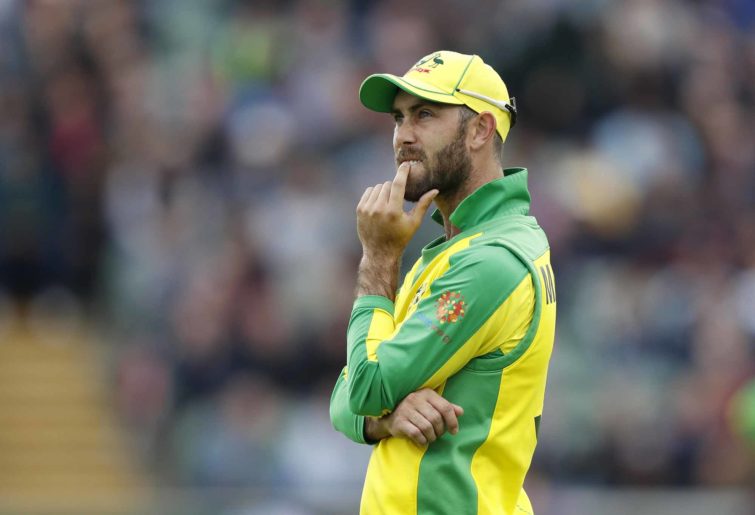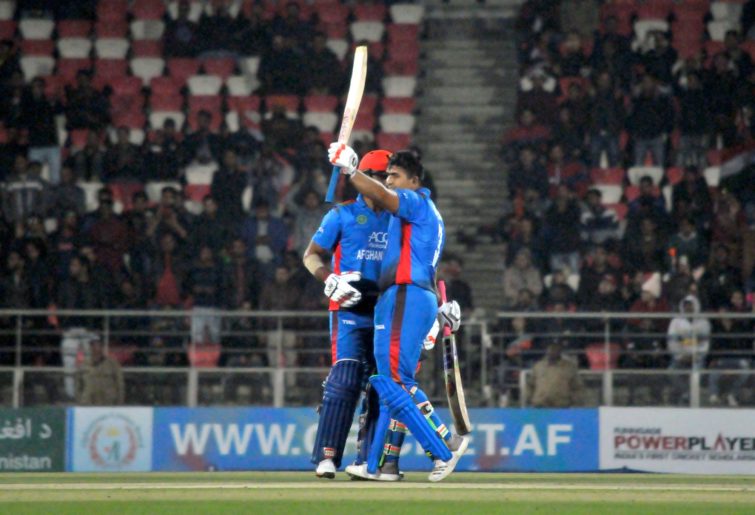WATCH; IPL bowler fuming after getting robbed of near-certain wicket by... Spider-Cam
Harshal Patel was not a happy man!
I belong to the category of people who are never fully satisfied with anything, so while the rest of the cricketing world is still talking about the greatest ever World Cup final ever and perhaps the best ODI match of all time, I am making my list of unfulfilled expectations.
Here are just five ways in which the World Cup fell short in my eyes.
Glenn Maxwell’s big show
At the SCG during the 2015 World Cup Glenn Maxwell smashed 102 from 53 deliveries against a hapless Sri Lanka attack in a most brilliant display of attacking batting. This innings and AB de Villiers’s massacre of the West Indies bowling at the same venue were among the major highlights of the event. With no De Villiers around this time, I waited patiently for the Big Show to come. Alas, I waited in vain.
His highest score again came against Sri Lanka, but this time it was only 46 not out from 25 balls at the Oval. Coming in the middle of the 43rd over, there was little scope for him there.
Maxwell looked ominous in the next match against the Tigers at Trent Bridge, but after racing to 32 from ten deliveries he was run out following a bad mix up with Usman Khawaja. As a Tiger fan I had mixed feelings about the run out – I knew the game was already over for the Tigers and I wanted a big show from the Big Show.
That was just about it for Maxwell in this WC. Constant change to his batting position didn’t help his cause. Both England and South Africa successfully exploited his weakness against the quick short stuff during the group matches, and the fact he came at No. 7 in the semi-final suggests the team management now sees him more as a fringe player rather than a matchwinning one.
I fully expect Glenn to come back from this setback and re-emerge as a nightmare for opposition bowlers, but as for the 2019 World Cup, the Maxwell equation will remain unsolved.

(AP Photo/Alastair Grant)
The Afghan success
While I didn’t expect the Afghans to make it to the knockout stage, I did expect them to win at least one or two matches. They had their chances, but the inexperience of the team cost them dearly in some close finishes. While they had close matches against their big neighbours, India and Pakistan, I think their best chance had come and gone early in the event in a rain-affected match against the Lankans at Cardiff.
After veteran off spinner Mohammad Nabi ran through the Sri Lankann middle order, taking 4-30, the weather intervened. Set a revised target of 187 from 41 overs, they recovered from a poor start to reach 5-121 in the 25th over, but then their lower order was blown away by Nuwan Pradeep and Lasith Malinga and they ended 35 runs short.
I followed the West Indies and the Afghan team with special interest as they were the two teams that had come via the qualifying event, and their poor show won’t do any good to the emerging nations’ claim for more World Cup places.
I should mention here that though the Afghans won the qualifying event in Zimbabwe, they had struggled there initially – in fact they needed help from both Nepal and the United Arab Emirates to finish in the top two. With hindsight it seems teams like Ireland or Scotland perhaps would have done better in the British conditions.
It is also interesting to note that both the Afghan and the Windies squads featured some champion T20 cricketers. It appeared to me again and again during the World Cup that the difference between the T20 game and the ODI game is enormous.

(STR/AFP/Getty Images)
The 400-plus scores
Obviously I looked at the big powers for this, but they failed. Jason Roy’s injury briefly took the wind away from the England batting. India never really managed to sort out their middle order, with the absence of Shekhar Dhawan was felt throughout. Australia got a number of great starts, but there was not sufficient acceleration in the middle order with Maxwell struggling. The Kiwi openers had a miserable time and their middle order, Kane Williamson in particular, was always busy repairing the early damage. Pakistan’s case was somewhat similar.
And just as the first-innings targets generally failed to reach my expected level, there were very few really good big chases. I am both happy and sorry to say that the only really planned 300-plus successful chase came from the Tigers against the West Indies. There were a few other close finishes, but most of these chases were start-stop affairs with desperate but failed attempts to go for big shots towards the end.
In the match against Australia at the Oval the Sri Lankan opening pair of Dimuth Karunaratne and Kusal Perera raced to 0-115 in just over 15 overs. This was the most aggressive opening partnership I witnessed in this World Cup if you exclude the small target the Kiwi openers chased against Sri Lanka very early in the tournament. But the middle order looked hapless against Mitchell Starc, and in the end the Lankans fell well short of their 335-run target.
The magic of spin
It’s 5 June, Eid day in Dhaka. In the afternoon, as my uncles and cousins get ready to watch the Bangladesh-New Zealand match, set to start at 6:30pm local time, I am busy watching the India-South Africa match at Southampton, and I’m liking what I’m seeing.
To begin with, both teams pick two specialist spinners each, and after Jasprit Bumrah removes the openers cheaply, it is the Indian spinners who take centre stage. Yuzvendra Chahal appears unplayable to the South Africans as he takes 4-51 to restrict the opposition to just 9-227.
Although the South African spinners fail to make similar impact, I am happy. The spinners have arrived and I expect great things from them.
I was wrong. Totally wrong.
As the tournament progressed the role of the spinners diminished gradually, and by the final itself only 11 of the 100 – or 102 – overs were bowled by the spinners, and they remained wicketless.
It is generally believed the orthodox spinners, especially the left-arm ones, have failed to react properly to the innovations in modern ODI batting. In this scenario many teams depended on their wrist spinners or the mystery ones. They didn’t get the expected returns – only Imran Tahir and Mujeeb Ur Rahman performed admirably. The likes of Adam Zampa and Kuldeep Yadav even lost their places in the team. The Afghans kept their trust in Rashid Khan, but he should easily make the 2019 World Cup XI of flops.
Of course the pitches and the short boundaries at some grounds didn’t help the spinners’ cause, but their poor showing must be a concern for lovers of cricket nonetheless. Hopefully they will bounce back in the next World Cup in India.
Ben Stokes certainly enjoys a high reputation as an all-rounder, but after England dropped Moeen Ali to play four frontline seamers, Stokes’s role as a bowler diminished and he played the knockout matches basically as a batsman. He bowled just seven overs in the last two matches.
In general the performances of most of the all-rounders were steady rather than matchwinning. Their role was supporting rather than leading. Hardik Pandya regularly bowled ten overs for India, but as a batsman his role seemed to be confined to some lofty hitting in the death overs.
With Andre Russell injured, the West Indies all-rounders quietly did their job, although Carlos Brathwaite came within one shot of winning the match for his team against New Zeland.
The Kiwis got steady contributions from Jimmy Neesham and Colin de Grandhomme. Pakistan picked no fewer than four spin bowling all-rounders in their team, but only Imad Wasim’s matchwinning effort against Afghanistan caught their attention.
It seems that, rather than looking for useful all-rounders, teams are looking players to perform regularly in one part and then occasionally contribute in the other. Examples of this are Kane Williamson, Soumya Sarkar, Steve Smith and Mitchell Starc, along with several others. The bat-a-bit-bowl-a-bit-type cricketers who were so prominent on the ODI circuit in the 1980s and 1990s seem to be out of favour.